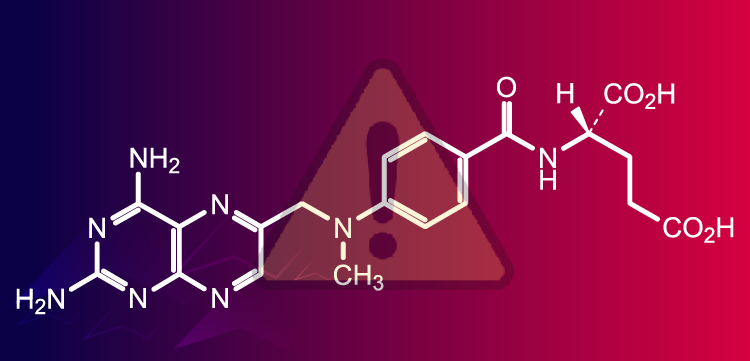
CHIP-Carrying Multiple Myeloma Correlates With More Aggressive Disease
Clonal hematopoiesis may be associated with the early development of toxic events in patients with newly diagnosed multiple myeloma.
Clonal hematopoiesis of indeterminate potential (CHIP), which has historically been associated with a 0.5% to 1.0% chance of developing hematological malignancies and cardiovascular diseases, correlates with more aggressive disease and poorer clinical outcomes in patients with newly diagnosed multiple myeloma (NDMM), according to findings from a study published in Scientific Reports.
Data from the study reveal that progression-free survival (PFS) and overall survival (OS) outcomes were significantly worse in patients with CHIP-carrying NDMM. The median PFS was 493 days in patients with CHIP vs not reached at 5000 days in those without CHIP (P <.0001). Additionally, the median OS was 925 days vs not reached, respectively (P = .025).
A multivariate analysis revealed that among patients with CHIP-carrying NDMM, high β-2 microglobulin levels were predictive of poorer PFS (HR, 1.20; 95% CI, 1.09-1.33) and OS (HR, 1.19; 95% CI, 1.05-1.34) outcomes, with negative impacts also reported among patients without CHIP. White platelets, which were not predictive of outcomes for patients not carrying CHIP, correlated with PFS (HR, 0.99; 95% CI, 0.98-1.00) and OS (HR, 0.98; 95% CI, 0.97-0.99) outcomes for patients with CHIP. Additional PFS influences among patients with CHIP-carrying NDMM included albumin (HR, 0.85; 95% CI, 0.77-0.95) and creatinine levels (HR, 0.62; 95% CI, 0.43-0.90).
“[O]ur study confirms that CHIP is frequently observed among patients [with multiple myeloma], where it correlates with a more aggressive disease and poorer clinical outcomes,” Elisa Gelli, PhD, postdoctoral researcher in the Genetics and Epigenetics of Behavior Laboratory at Fondazione Istituto Italiano di Tecnologia in Genoa, Italy, and a member of the Clinic of Hematology in the Department of Internal Medicine at the University of Genoa, wrote in the publication with study coinvestigators. “Interestingly, the presence of CHIP is associated with the early development of toxic events, while its burden appears to be related to platelets count. Consistent with our results, we propose specific management strategies for [patients with] CHIP-carrying [multiple myeloma], particularly regarding therapy-related toxicity.”
The study enrolled a total of 76 patients with NDMM treated between January 2019 and September 2021. DNA was isolated from whole peripheral blood and bone marrow samples, with next-generation sequencing performed at diagnosis and follow-up. Selected somatic mutations and their variant allele frequencies (VAFs) were correlated with demographic and clinical parameters, which included age, sex, International Staging System (ISS) disease, revised ISS (R-ISS) stage, outcomes, and adverse event (AE) occurrence.
The median age for the overall population, in those with CHIP, and those without was 71 (range, 40-90), 72 (range, 46-84), and 71 years (range, 40-90), respectively (P = .52). A total of 41 of 76 patients were male, including 19 of 35 in the CHIP cohort and 22 of 41 in the no CHIP cohort. Additionally, the most common myeloma subtype was IgG kappa, accounting for 29, 15, and 14 patients, respectively (P = .84), followed by IgG lambda, accounting for 19, 7, and 12 patients.
The median hemoglobin levels were 10.61 g/dL among patients with CHIP vs 11.78 g/dL in those without CHIP (P = .019), median β-2-microglobulin levels were 9.04 mg/L vs 4.15 mg/L (P = .05), and median creatinine levels were 2.41 mg/dL vs 1.47 mg/dL, respectively (P = .075). Bone marrow plasma cell level at 60% or greater was highlighted in 80% (IQR, 70%-81%) among those with CHIP vs 70% (IQR, 65%-80%) in those without, and most patients in both arms had a disease stage of ISS2 (n = 12, 14) or ISS3 (n = 20, 9; P = .0051) and R-ISS2 (n = 9, 20) or R-ISS3 (n = 23, 6; P = .0001).
Any-grade AEs occurred in 97% of the CHIP group and 80% of the no CHIP group. Furthermore, Grade 3 or 4 AEs occurred in 85.7% and 36.5% of the respective groups (P = .036). The most common grade 3 or 4 hematologic AEs included neutropenia (42.8% vs 24.3%), thrombocytopenia (20% vs 0%), and anemia (20% vs 0%).
Common grade 3 or 4 non-hematologic AEs in the CHIP and no CHIP cohorts included gastrointestinal AEs (14.2% vs 4.8%) and rash (17.1% vs 2.4%). Common grade 3 or 4 infections in the respective arms included COVID-19 (14.2% vs 0%) and pneumonia (14.2% vs 7.3%), and the most common grade 3 or 4 cardiovascular event was venous thromboembolism (28.5% vs 12.1%).
Reference
Gelli E, Martinuzzi C, Soncini D, et al. Clonal hematopoiesis impacts frailty in newly diagnosed multiple myeloma patients: a retrospective multicenter analysis. Sci Rep. 2024;14:29394. doi:10.1038/s41598-024-79748-7
Newsletter
Stay up to date on recent advances in the multidisciplinary approach to cancer.

















































































